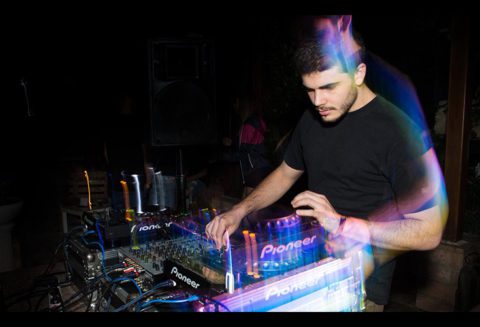
For anyone who wants to create music, having a good idea on essential stages in the music production process is beneficial to your workflow and productivity.
This is even true for most musicians who are starting out and find themselves always getting stuck in making music from start to finish. It leaves a feeling of frustration of having unfinished project files despite spending hours in the studio to come up with something amazing.
In this blog post I will guide you on the basics of what you need to get started so to make your music projects more successful.
1. Conception
Conception is the very first stage of the music production process. All creative projects start out with an idea or a burst of inspiration. This can be based on many things such as a personal experience or certain life events.
This is the stage where you want to create music that makes you feel a certain type of way or carries with it a certain kind of message. From that initial spark does the music creation process begin as you start to imagine and develop a sort of imagination or theme on how the song should sound and feel.
It can be a happy music or sad music. It can be aggressive music or chill music. It can be based on genre or a certain kind of vibe the music evokes. Either way the conception stage is where you allow all your creative juices to roam freely and come up with something that you like.
2. Composition
The next step is to materialize your idea or bring it to reality. For most musicians, this starts out with humming a certain tune, writing down lyrics, fleshing out chords on a guitar or hitting piano notes to give a sort of melody to work with.
The initial idea doesn’t have to be big as long as you have a some kind of a loop or phrase that forms the foundation of the music you’re going to create.
You can start to think about things like song key, tempo, time-signature, chord progression, strong motif, melody, countermelodies or harmonic layers.
Having a good basic understanding of music theory goes a long way in helping you develop your idea so that it musically sounds appealing and satisfying. They include:
- Rhythm
- Melody
- Harmony
Everything else you create will revolve around these 3 pillars of music theory in order to come up with music that sounds amazing.
3. Arrangement
The arrangement stage is where you decide the placement of the intro, verse, chorus, bridge and outro.
The goal of arrangement is to assemble musical ideas in a way that is easily absorbed and understood, flowing from one phrase to the next with a strong sense of start then taken through a journey up to the finish.
If you’re starting out its best to listen to your genre of choice and keenly follow the structure of popular songs.
4. Tracking
The goal of tracking is to capture the desired performance of a song. This is the most fun but challenging part when making music.
This is where the music producer gets to record the instruments and vocals straight into the DAW.
For the most part, they usually start with the drums, followed by the bass, and finally the lead instruments which make up the melody. But with any creative endeavor, whichever part you choose to record first is entirely up to you.
Audio tracking requires doing several takes in order to come up with the best performance. It’s also much easier to perfect each individual track when they’re recorded individually.
5. Editing
This is the stage where you drag, drop, cut, trim, copy, paste, quantize and nudge the various parts to fit together.
You’ll need to make small adjustments such adding and removing instruments, level automation, lengthening or shortening a certain section. However, at this critical stage do you find many musicians, engineers and producers get so caught up in the small details.
Be fast and make things as simple as possible without being to overly complex.
6. Mixing
Mixing is where you get to adjust audio levels to give a desirable sound and effect. At this stage is also where you get to tweak and clean up transitions and remove any unwanted tracks which are less desirable in the overall mix.
Most importantly you get to use audio effects such as EQ, delay, reverb, compression and distortion. However, mixing your tracks won’t compensate for bad vocals or poorly recorded instruments. A good mix should have depth, width and height.
Mixing your music involves a lot of practice, listening skills and patience. Mixing is the stage in which you use levels, EQ, panning and effects to create the stereo image and final sound you want.
7. Mastering
Mastering is basically adjusting your mix for public use or distribution while still maintaining maximum sound quality. Whether used in broadcast, downloaded, or streamed on a hi-fi system, headphones, car system, or on any other playback system; it should give the listener the most accurate interpretation.
There are various techniques and tools used to make sure the track is loud enough, has a good stereo image and sounds professional. In mastering, the audio engineer is focusing on the whole song, EP, or album as a full from start to finish.
Conclusion
The bottom line here is that any compromise in the production process is one that will leave the overall product in a state that is less than ideal.
It’s best that you discover and develop your own music production process as you practice your craft in order to become good and confident in creating your own music.



